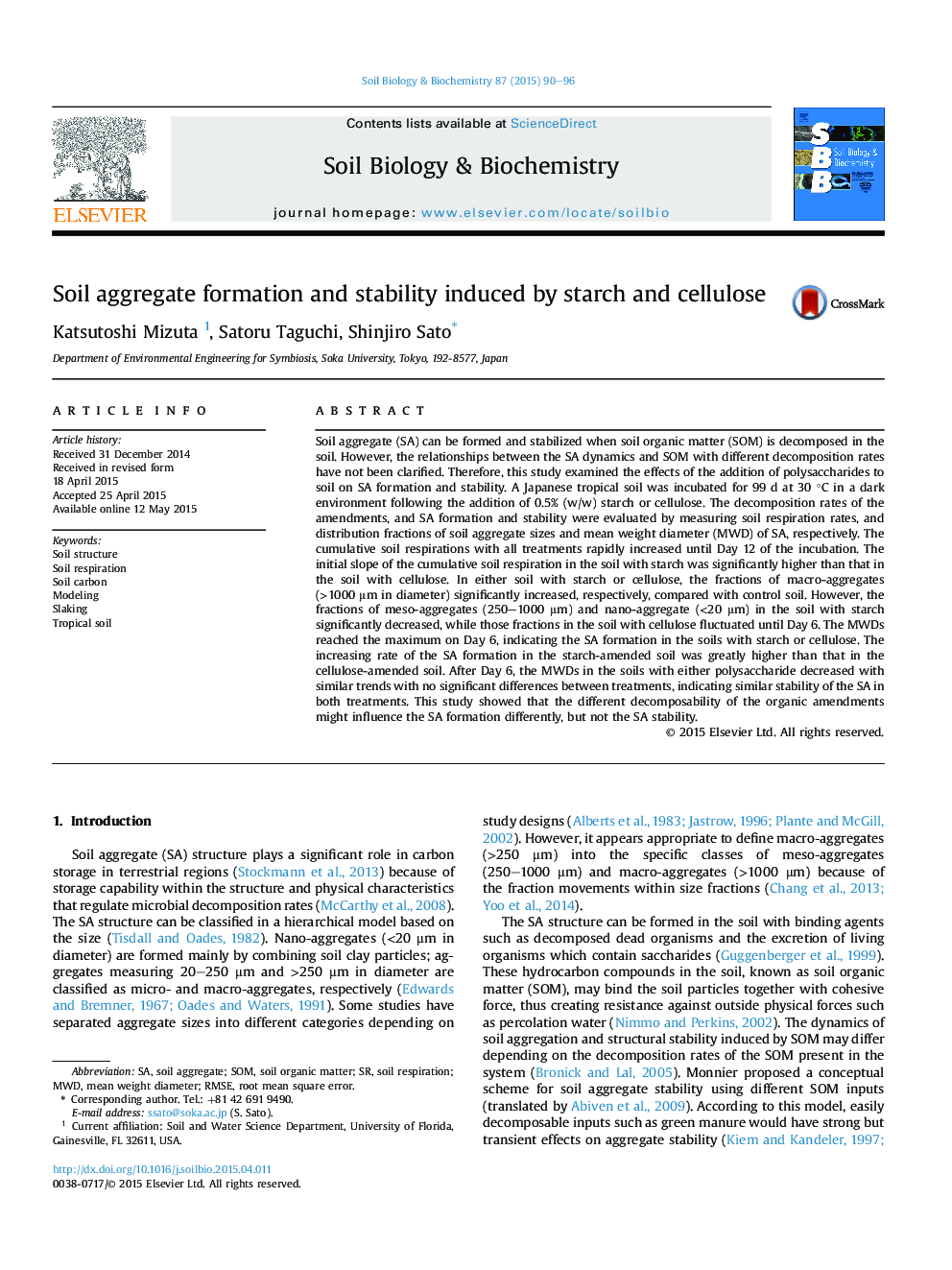| کد مقاله | کد نشریه | سال انتشار | مقاله انگلیسی | نسخه تمام متن |
|---|---|---|---|---|
| 2024504 | 1542597 | 2015 | 7 صفحه PDF | دانلود رایگان |
• Decomposition of starch and cellulose in soils were determined by soil respiration.
• Starch was more easily decomposable than cellulose.
• Macro-aggregates were formed in the soils with both polysaccharides.
• Macro-aggregates were more quickly formed in the starch-added soil.
• Destruction rates of macro-aggregates were not affected by both amendments.
Soil aggregate (SA) can be formed and stabilized when soil organic matter (SOM) is decomposed in the soil. However, the relationships between the SA dynamics and SOM with different decomposition rates have not been clarified. Therefore, this study examined the effects of the addition of polysaccharides to soil on SA formation and stability. A Japanese tropical soil was incubated for 99 d at 30 °C in a dark environment following the addition of 0.5% (w/w) starch or cellulose. The decomposition rates of the amendments, and SA formation and stability were evaluated by measuring soil respiration rates, and distribution fractions of soil aggregate sizes and mean weight diameter (MWD) of SA, respectively. The cumulative soil respirations with all treatments rapidly increased until Day 12 of the incubation. The initial slope of the cumulative soil respiration in the soil with starch was significantly higher than that in the soil with cellulose. In either soil with starch or cellulose, the fractions of macro-aggregates (>1000 μm in diameter) significantly increased, respectively, compared with control soil. However, the fractions of meso-aggregates (250–1000 μm) and nano-aggregate (<20 μm) in the soil with starch significantly decreased, while those fractions in the soil with cellulose fluctuated until Day 6. The MWDs reached the maximum on Day 6, indicating the SA formation in the soils with starch or cellulose. The increasing rate of the SA formation in the starch-amended soil was greatly higher than that in the cellulose-amended soil. After Day 6, the MWDs in the soils with either polysaccharide decreased with similar trends with no significant differences between treatments, indicating similar stability of the SA in both treatments. This study showed that the different decomposability of the organic amendments might influence the SA formation differently, but not the SA stability.
Journal: Soil Biology and Biochemistry - Volume 87, August 2015, Pages 90–96
